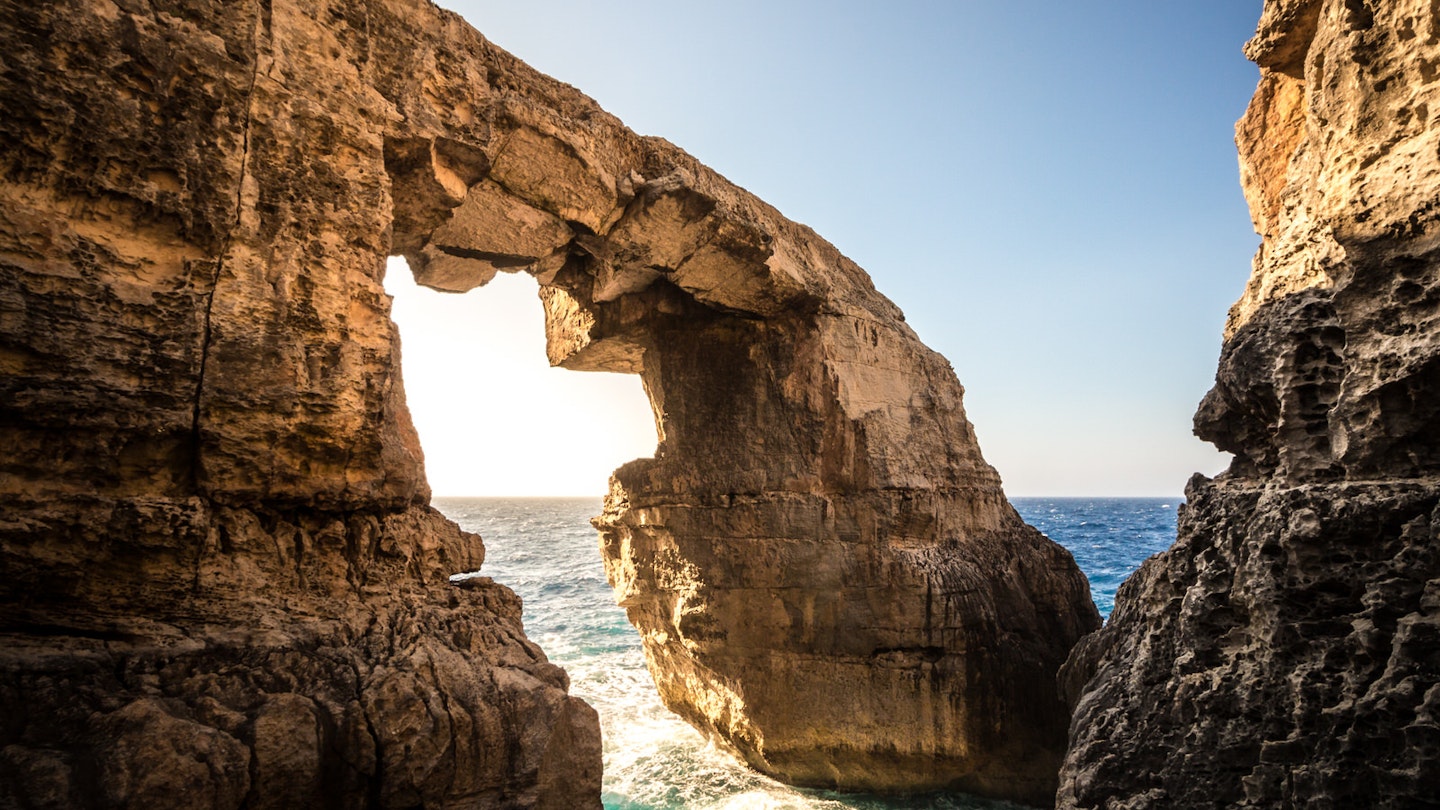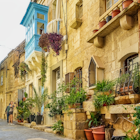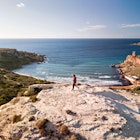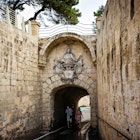Small but perfectly formed, the Maltese island of Gozo has plenty of historical and natural treasures to fill a long weekend and more. And its diminutive, Manhattan-equalling size ensures that getting from one to another, whether by foot, bicycle, taxi or public bus, is breeze.
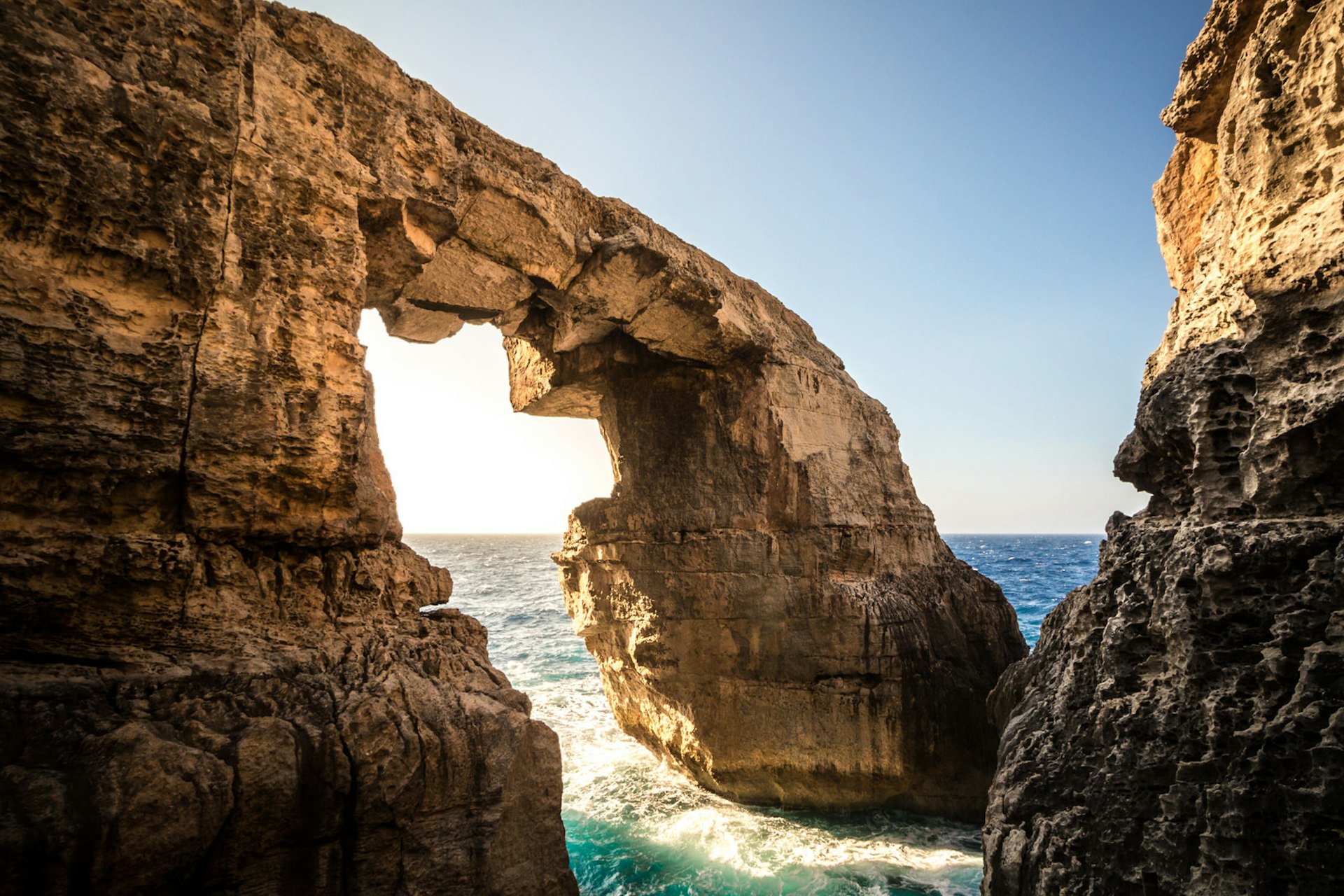
Wied il-Mielaħ & Wied il-Għasri, gorgeous gorges with activities aplenty
With cliff-bound inlets, dramatic rock arches and picturesque beaches, the jagged and somewhat remote northwest coast of Gozo throws up many outdoor adventure opportunities, something Gozo is becoming known for. Two of the most inspiring sites are Wied il-Mielaħ and Wied il-Għasri. The former is an incredible natural rock formation that arches out over the sea – it’s possible to cycle and walk over it, and there are bolts in place for rock climbing on its near-vertical face. Further east, the narrow inlet of Wied il-Għasri is a great place to swim or snorkel, and you can lounge on its lovely shingle beach when the sea is calm. Gozo Adventures runs a mountain bike tour from the town of Għarb to Qbajjar that takes in both these sites and plenty of cliff-top panoramas. Hiking between the gorges is also a wonderful option.
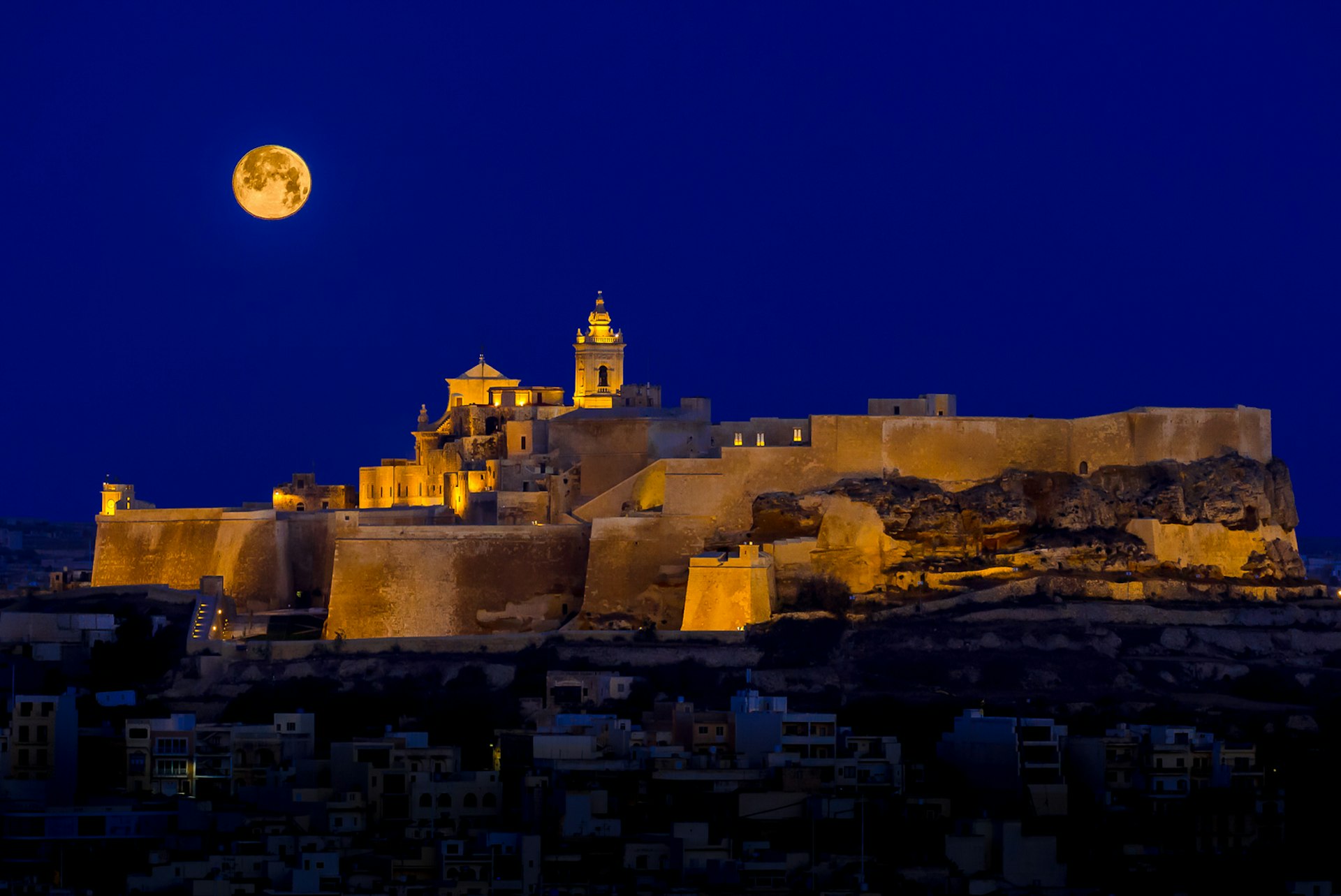
Il-Kastell, a historic fortress towering over Victoria
Not all of Gozo’s greatest vistas are found along sea cliffs – some of the best are found atop the walls of Il-Kastell. This 15th-century fortress – built over Bronze Age defences – stands tall over the island’s capital Victoria (known locally as Rabat) and has a long history of protecting Gozitans from raiders. Incredibly, it was still normal practice for all the islanders to take nightly refuge in the fortress until well into the 17th century. It's worth tearing yourself away from the lofty views from the ramparts to head down into the modern visitors' centre, which has been beautifully incorporated into the fort’s historical structure.
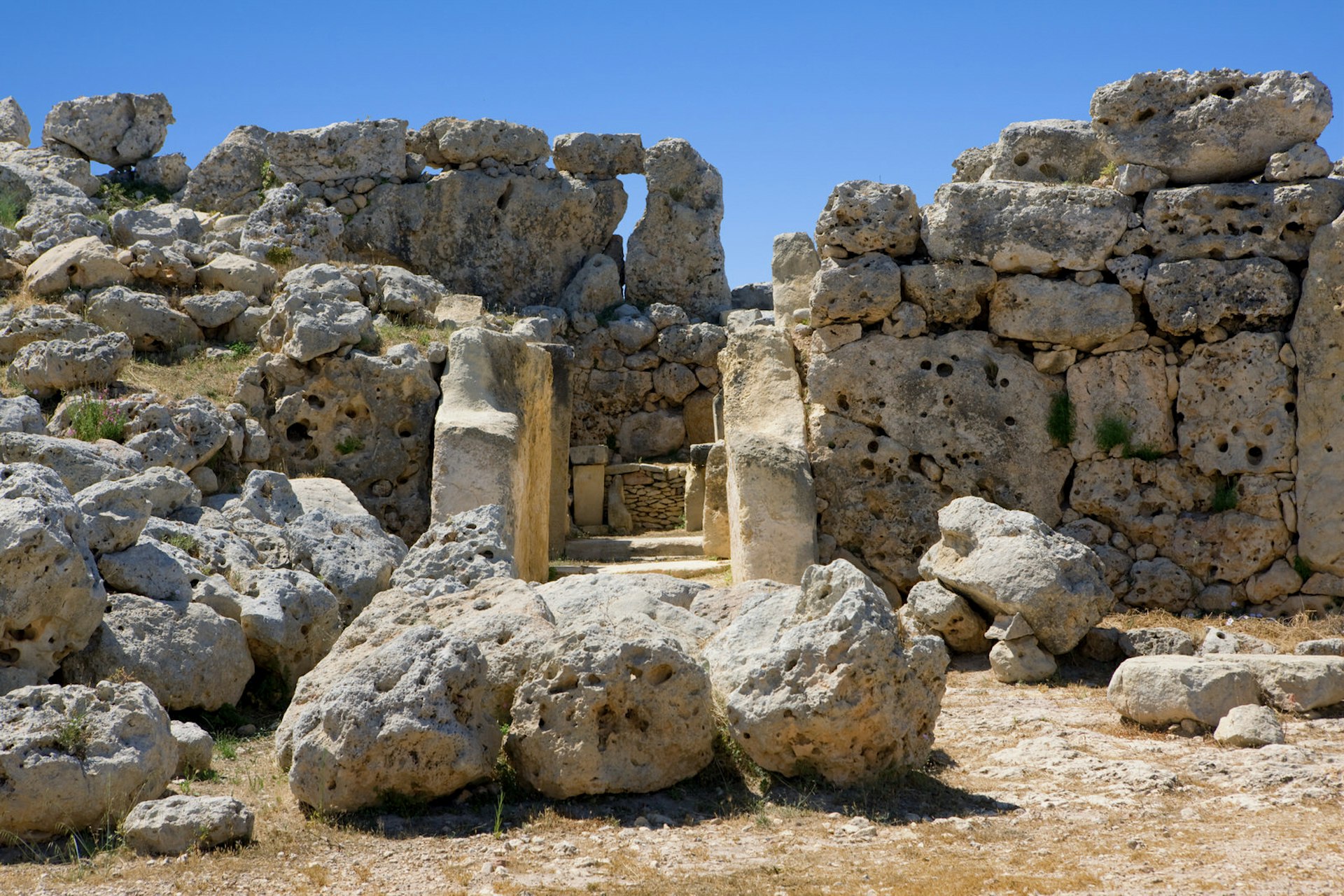
Ġgantija Temples, the world’s oldest free-standing structures
Outdating the Pyramids of Giza by a millennia, the megalithic Ġgantija Temples stand proudly over southern Gozo from their perch atop a gentle ridge south of Xagħra. While the impressive visitor centre at the entrance to the site goes into great depth about the history of these temples, which are reputed to be the oldest free-standing structures in the world, there is nothing like experiencing them in person.
As you walk down the elevated boardwalks to the two main temples, your first glimpses of them may remind you of Stonehenge; large monoliths, sometimes precariously balanced, stacked to form a crude circle. However, once you cross the threshold of either, your initial impression will be eclipse by the fine details of the internal organisation. Each temple is divided into five semi-circular niches, with various altars – some benches, others trilithon in structure – and carvings whose purpose seemed to range from decorative to functional. An example of the latter would include the eight holes in the threshold slab of the southern temple (four on each side) that are believed to have held libations during ceremonies. While these inner walls were made of relatively soft globigerina limestone, the outer walls of the complex were constructed using harder-wearing coralline limestone to withstand the elements. The sheer size of the megaliths in the outer wall (the largest weighs 57 tonnes) is impressive, particularly when considering the efforts that would have been required to put them in place some 5600 years ago.
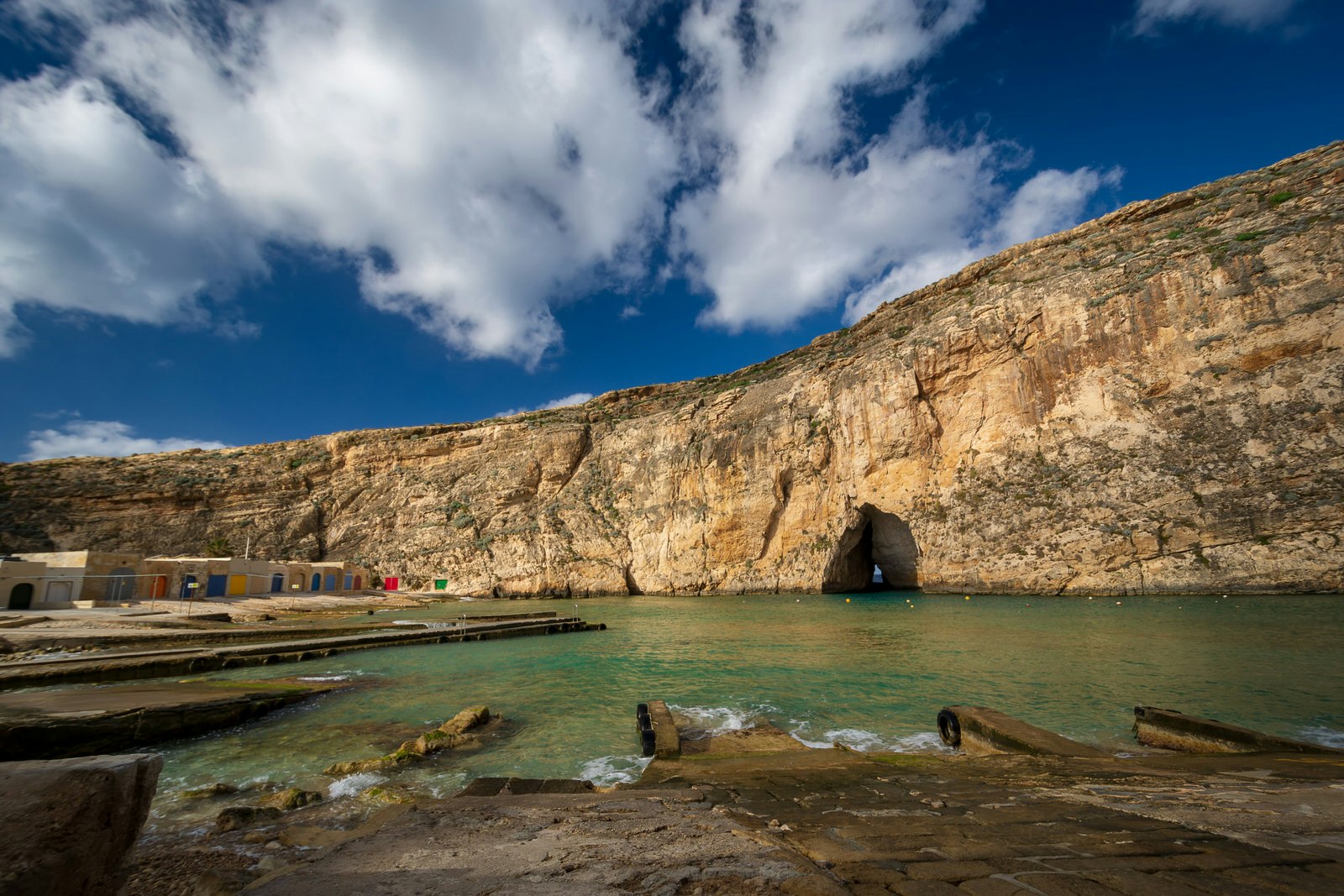
Dwejra’s Inland Sea, a window into the great blue
As you walk down the hill towards the Inland Sea near Dwejra in the far west of Gozo, the scene that presents itself seems somewhat implausible. After all, how does this quaint and colourful fishing village survive on the shore of such a small lagoon? And then you see it. It’s just a flash of light to start, but as you near the water’s edge the shadow at the base of the cliff on the opposite side of the lagoon eventually reveals itself to be a long tunnel out into the Mediterranean. Just big enough for small fishing boats to snake through its dark confines, the tunnel also allows fishers to ferry visitors out for short but wildly picturesque tours.
Cruising into the darkness, with occasional views to the tunnel’s opening beyond, it’s a rather surreal journey. Especially as you near the exit, where the refractive properties of the crystal clear water turn it an incredibly luminous cobalt colour. Following the base of the coast’s towering seaside cliffs, these cruises also visit the site of the former Azure Window, a natural rock arch that collapsed into the sea because of natural erosion in March 2017.
Once back through the cave and with your feet firmly on shore, it’s a short hike to a viewpoint overlooking over the Blue Hole. Some 10m in diameter and 25m deep, this chimney in the limestone is connected to the sea beneath the surface and is an incredible site for both diving and snorkelling. Again, the blue hues here are worth an Instagram post or two.

Qbajjar Salt Pans, harvesting today as in centuries past
Over centuries, the limestone beds that form the foreshore west of Qbajjar Bay on the north coast of Gozo have been hewn into a series of shallow pools to enable salt harvesting. During hotter periods, the pools filled with seawater evaporate, leaving the precious commodity behind. There are a few families who still operate the pans, and it’s possible to purchase salt from them at a small roadside stand.
Matt Phillips travelled to Gozo with support from the Malta Tourism Authority. Lonely Planet contributors do not accept freebies in exchange for positive coverage.
